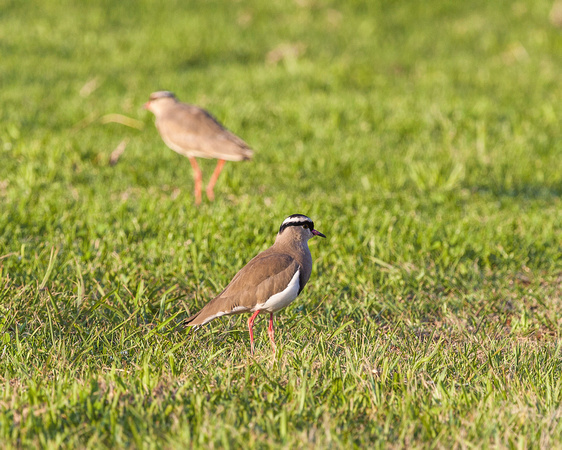Crowned Plover (Vanellus coronatus)
Crowned Lapwing or Crowned Plover (Vanellus coronatus)
11 inches long
Resident in eastern and southern Africa, crowned plovers are found from Ethiopia in the north to South Africa in the south and east to Kenya. Recorded as high as 3000 m above sea level.
Found where the grass is short or has been burned, such as on dry grassland, open savanna, and cultivated lands.
Breeding occurs in the spring months from July to October. The nest is in a shallow depression in the soil with a lining of vegetation and other debris. The nests are on flat ground near a shade tree and mammal droppings that are the same color as the eggs. There are normally 3 eggs, sometimes 2 or 4. Incubation requires 28 to 32 days and is done by both sexes. Immediately after hatching the young leave the nest while both parents look after them.
Because crowned plovers live in open grassland where there is no vegetation to conceal them, they have a highly-developed ability to detect potential predators. Often nesting occurs in close vicinity to other plovers. As soon as hatching occurs the adults change from being quiet and restrained to being exceedingly noisy and aggressive at the approach of a human. They will "dive bomb" humans to drive them away.
The crowned plover opportunistically forages on a wide variety of insects, but mostly ants and termites. These insects are often extracted from the dung of large mammals. They feed mainly by surface pecking as opposed to digging. One curious feeding habit of all plovers, which has not fully been analyzed, has been called foot paddling or foot trembling. The plover stamps the ground with its foot. Worms mistake the noise for the pattering of rain and burrow up to the surface where they are eaten by the plover.


